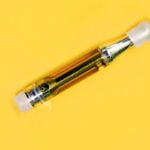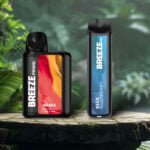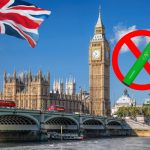The cannabis market has grown dramatically in recent years, resulting in an array of products that can be overwhelming for consumers. Traditional marijuana and its derivatives now face competition from a multitude of hemp-derived cannabinoids, available in diverse formats and sold both online and in brick-and-mortar stores. Understanding the various cannabinoids and their effects is crucial for anyone looking to tailor their cannabis experience, whether for recreational or therapeutic purposes.
Types of Cannabinoids
Cannabinoids, the active compounds found in cannabis, can be categorized in several ways: psychoactive or non-psychoactive, active or inactive, natural or artificial. Each category offers unique properties and effects, making it essential to understand their distinctions.
Psychoactive Cannabinoids
Psychoactive cannabinoids interact with the body’s CB1 receptors, leading to the “high” typically associated with cannabis use. The intensity of these effects varies based on the specific cannabinoid, its concentration, and individual factors such as tolerance and genetics.
Delta-9-Tetrahydrocannabinol (Delta-9 THC): The most well-known psychoactive cannabinoid, Delta-9 THC, is responsible for the majority of the intoxicating effects of cannabis. A few milligrams can produce pronounced effects, making it a popular choice for recreational users.
Delta-8-Tetrahydrocannabinol (Delta-8 THC): Delta-8 THC offers a milder high compared to Delta-9 THC. It’s often preferred by users seeking a less intense experience.
Cannabinol (CBN): Although considered mildly psychoactive, CBN is a byproduct of THC degradation and has a weak binding affinity for CB1 receptors. It’s not a suitable choice for those seeking strong psychoactive effects.
Non-Psychoactive Cannabinoids
Non-psychoactive cannabinoids do not produce a high, as they have little to no affinity for CB1 and CB2 receptors. However, many exhibit significant therapeutic potential.
Cannabidiol (CBD): Perhaps the most well-known non-psychoactive cannabinoid, CBD has shown promise in treating various conditions, including epilepsy, anxiety, and chronic pain.
Cannabigerol (CBG): This cannabinoid is often referred to as the “mother of all cannabinoids” because it is the precursor to other cannabinoids like THC and CBD. CBG has potential therapeutic benefits, including anti-inflammatory and neuroprotective properties.
Cannabichromene (CBC): CBC is another non-psychoactive cannabinoid with potential anti-inflammatory, anti-viral, and anti-tumor properties.
Active Cannabinoids
Active cannabinoids are those that have undergone decarboxylation, a process where heat removes an acidic carboxyl group, making the cannabinoid more chemically stable and often altering its effects.
THC: As mentioned, THC is an active cannabinoid responsible for the psychoactive effects of cannabis.
CBD and CBG: Both are active cannabinoids post-decarboxylation, interacting with the body’s endocannabinoid system without producing a high.
Inactive Cannabinoids
These are cannabinoids that have not yet undergone decarboxylation. They are highly unstable and serve as precursors to active cannabinoids.
Tetrahydrocannabinolic Acid (THCA): The acidic form of THC, THCA converts to THC when exposed to heat.
Cannabidiolic Acid (CBDA): The precursor to CBD, CBDA also undergoes decarboxylation to become CBD.
Cannabigerolic Acid (CBGA): The “stem cell” cannabinoid, CBGA, is the precursor to many other cannabinoids, including THC and CBD.
Phytocannabinoids
Phytocannabinoids are naturally occurring cannabinoids found in the cannabis plant. They can be directly produced by the plant or through the degradation of other cannabinoids.
Trace Cannabinoids: These are found in minimal amounts in the plant but can be manipulated in a lab for commercial purposes. Examples include Delta-8 THC and Hexahydrocannabinol (HHC).
Artificial Cannabinoids
Artificial or synthetic cannabinoids are not found in nature and are typically produced in a lab. They are generally illegal, with a few exceptions like Marinol and Syndros, which are FDA-approved for specific medical conditions.
THC-O and Spice: These synthetic cannabinoids are illegal in many parts of the world due to their unpredictable effects and potential health risks.
Classes of cannabinoids
While THC and CBD dominate the discussions, there is a plethora of cannabinoids, each with unique chemical structures, benefits, and effects.
1. Cannabidiol (CBD)
Formula: C21H30O2
Legality: Federally legal in the United States under the 2018 Farm Bill, though some states have restrictions.
Effects:
CBD is non-intoxicating and primarily affects CB1 and CB2 receptors indirectly. It is widely used for relaxation, stress reduction, and pain relief. Additionally, CBD has shown potential in treating seizures, inflammation, and providing neuroprotection. The FDA has approved a CBD-based drug, Epidiolex, for its anticonvulsant properties.
2. Cannabidiolic Acid (CBDA)
Formula: C22H30O4
Legality: Federally legal under the 2018 Farm Bill, with state laws varying.
Effects:
CBDA is the precursor to CBD and is non-psychoactive. It shares similar medicinal properties with CBD, such as anticonvulsant and anti-inflammatory effects. CBDA might also be more effective in preventing acute nausea.
3. Cannabidivarin (CBDV)
Formula: C19H26O2
Legality: Federally legal under the 2018 Farm Bill, with state laws varying.
Effects:
CBDV is chemically similar to CBD but with a shorter carbon tail. It has shown promise in reducing seizures in individuals with Rett Syndrome and may help alleviate nausea and irritable bowel disease (IBD) symptoms. Users often report that CBDV helps with mental clarity and focus.
4. Cannabigerol (CBG)
Formula: C21H32O2
Legality: Federally legal under the 2018 Farm Bill, with state laws varying.
Effects:
CBG is a precursor to other cannabinoids like THC and CBD. It is a partial agonist of the CB1 receptor and regulates endocannabinoid signaling. CBG is non-intoxicating and may have medicinal benefits, including stress and anxiety reduction, pain management, and sleep improvement. It also shows potential as a neuroprotectant and anti-inflammatory agent.
5. Cannabigerolic Acid (CBGA)
Formula: C22H32O4
Legality: Federally legal under the 2018 Farm Bill, with state laws varying.
Effects:
CBGA is the parent molecule from which all other cannabinoids are derived. It is non-intoxicating and has shown potential as an anticonvulsant, particularly for Dravet Syndrome. Additionally, CBGA might possess cytotoxic properties, potentially reducing the spread of colon cancer cells and providing an energy boost without causing jitters.
6. Cannabinol (CBN)
Formula: C21H26O2
Legality: Federally legal under the 2018 Farm Bill, with state laws varying.
Effects:
CBN is mildly intoxicating and is a degraded byproduct of delta-9 THC. It is commonly used as a sleep aid, especially when combined with THC. Independent studies on CBN’s sedative effects have yielded mixed results.
7. Delta-6-Tetrahydrocannabinol (Delta 6 THC)
Formula: C21H30O2
Legality: Federally legal under the 2018 Farm Bill, with state laws varying.
Effects:
Delta 6 THC is a THC isomer with a double bond on the sixth carbon of its ring. It is psychoactive but less so than delta-8 THC. Research on delta 6 THC is limited, and its exact effects are not well understood.
8. Delta-8-Tetrahydrocannabinol (Delta 8 THC)
Formula: C21H30O2
Legality: Federally legal under the 2018 Farm Bill, with state laws varying.
Effects:
Delta 8 THC is a popular isomer of THC with a double bond on the eighth carbon. It provides a milder high compared to delta-9 THC, often described as clear-headed and functional. Delta 8 THC may also help reduce nausea and inflammation.
9. Delta-9-Tetrahydrocannabinol (Delta 9 THC)
Formula: C21H30O2
Legality: Federally illegal in the United States if the concentration exceeds 0.3% by dry weight. However, many states have legalized its medical or recreational use.
Effects:
Delta 9 THC is the primary psychoactive component in marijuana, binding effectively to CB1 and CB2 receptors. Its effects vary based on concentration and strain, potentially causing anxiety in higher doses. Therapeutic uses include appetite stimulation, neuroprotection, and pain reduction.
10. Delta-10-Tetrahydrocannabinol (Delta 10 THC)
Formula: C21H30O2
Legality: Federally legal under the 2018 Farm Bill, with state laws varying.
Effects:
Delta 10 THC is a THC isomer discovered accidentally. It is psychoactive but generally less intense than delta-8 and delta-9 THC. Anecdotal reports suggest a mild, sativa-like head buzz.
11. Delta-11-Tetrahydrocannabinol (Delta 11 THC)
Formula: C21H 30O2
Legality: Federally legal under the 2018 Farm Bill, with state laws varying.
Effects:
Delta 11 THC is a lesser-known THC isomer. Early research indicates it may act as a CB1 antagonist, potentially reducing the intensity of delta-9 THC when consumed together. Its medicinal benefits are not yet explored.
12. Hexahydrocannabinol (HHC)
Formula: C21H32O2
Legality: Federally legal under the 2018 Farm Bill, with state laws varying.
Effects:
HHC is a trace cannabinoid that can get users high. Its effects are generally less potent than delta-9 THC. Emerging research suggests HHC may have tumor-fighting properties. Consumers should verify the ratio of 9R-HHC to 9S-HHC in products, as 9R-HHC is believed to be more potent.
13. Hexahydrocannabiphorol (HHCP)
Formula: C23H36O2
Legality: Federally legal under the 2018 Farm Bill, with state laws varying.
Effects:
HHCP is a hydrogenated form of HHC with a longer carbon side chain, enhancing its binding ability to CB1 and CB2 receptors. It is considered more potent than HHC, particularly the 9R-HHCP form. Consumers should opt for HHCP rather than HHC-O due to potential lung hazards associated with HHC-O.
14. THCA (Tetrahydrocannabinolic Acid)
Chemical Structure and Synthesis:
THCA is the acidic precursor to delta-9 THC. It is non-psychoactive in its raw form but converts into THC through a process known as decarboxylation, which involves exposure to heat or UV light. This transformation makes THCA challenging to handle and store, as improper conditions can inadvertently convert it into the psychoactive THC.
Formula: C22H30O4
Legality:
THCA products are federally legal in the United States. However, exposure to heat, oxygen, or UV rays can convert THCA into delta-9 THC, which is federally illegal. State laws regarding THCA products vary.
Effects and Applications:
THCA does not bind to CB1 receptors and thus is non-psychoactive. Users are interested in THCA for its potential anti-inflammatory and neuroprotective properties. Some seek THCA for its raw form benefits, while others plan to decarboxylate it to produce delta-9 THC for its psychoactive effects.
15. THC-B (Tetrahydrocannabutol)
Chemical Structure and Synthesis:
THC-B is the butyl homolog of THC, meaning it is structurally similar but has a missing carbon in its tail. This slight structural difference can lead to distinct effects and interactions within the body.
Formula: C20H28O2
Legality:
THC-B is federally legal in the United States under the 2018 Farm Bill. However, its legal status can vary by state.
Effects and Applications:
THC-B has shown potential in inhibiting the replication of the COVID-19 virus, outperforming other cannabinoids in certain studies. It may have similar CB1 and CB2 affinity as delta-9 THC, indicating possible psychoactive effects. Additional research is needed to verify these findings and explore other therapeutic applications.
16. THCC (Tetrahydrocannabiorcol)
Chemical Structure and Synthesis:
THCC is a trace cannabinoid found in cannabis pollen from non-flowering male plants. It was first identified in the 1970s but remains largely unexplored due to its rarity.
Formula: C17H22O2
Legality:
THCC products are theoretically legal in the United States, but no commercial options exist. Researchers are the primary individuals with access to this cannabinoid.
Effects and Applications:
THCC is non-psychoactive and activates the temperature-sensitive TRPA1 channel, which regulates protective responses such as airway resistance and cough. It may have potential in future anti-inflammatory and analgesic therapies.
17. THC-H (Tetrahydrocannabihexol)
Chemical Structure and Synthesis:
THC-H is the hexyl homolog of THC, identified in 2020. It has a six-carbon tail, suggesting high CB1 binding affinity.
Formula: C22H32O2
Legality:
THC-H products are federally legal in the United States under the 2018 Farm Bill, but state laws can vary.
Effects and Applications:
While THC-H is psychoactive, its exact potency and effects are not well-documented. Its longer tail may indicate stronger affinity for CB1 receptors, but more research is needed to confirm its properties and potential uses.
18. THC-JD (Tetrahydrocannabioctyl)
Chemical Structure and Synthesis:
THC-JD is an octyl homolog of THC, meaning it has an eight-carbon tail. There is also a synthetic cannabinoid with the same name, developed in 1941. The true nature of commercially available THC-JD products is unclear.
Formula: C24H36O2
Legality:
THC-JD blends are legal under the 2018 Farm Bill if they contain true tetrahydrocannabioctyl and not the synthetic variant. State laws may differ.
Effects and Applications:
The potency of THC-JD is uncertain, and there is no research to verify its effects or availability. Its longer tail suggests high CB1 binding affinity, but the lack of concrete data makes its true impact unknown.
19. THC-O (Tetrahydrocannabinol-O-Acetate)
Chemical Structure and Synthesis:
THC-O is the acetate ester form of THC. It has gained attention for its purported high potency and psychedelic effects.
Formula: C23H32O3
Legality:
THC-O is considered an illegal Schedule I substance in the United States because it has not been proven to occur naturally in hemp. As an artificial cannabinoid, it is not protected under the 2018 Farm Bill.
Effects and Applications:
THC-O is highly psychoactive, with some users reporting mild to moderate psychedelic effects. However, vaping THC-O is risky due to the potential formation of the dangerous lung intoxicant ketene when acetates are exposed to heat.
20. THCM (Tetrahydrocannabinol Monomethyl Ether)
Chemical Structure and Synthesis:
THCM is the monomethyl ether form of THC. It has been identified in marijuana smoke but has never been successfully isolated.
Formula: C22H32O2
Legality:
Products labeled “THCM” are difficult to authenticate. They can be legally sold in the United States if they are hemp-derived and contain below 0.3% delta-9 THC. State laws may vary.
Effects and Applications:
Little is known about THCM’s effects when consumed. There is a misconception that it can be used to identify cannabis use during pregnancy, but this is unrelated to the cannabinoid itself. Its interactions with CB1 or CB2 receptors remain largely unexplored.
21. THCP (Tetrahydrocannabiphorol)
Chemical Structure and Synthesis:
THCP is a trace cannabinoid identified in 2019 by Italian researchers. It has two additional carbon atoms on its side chain compared to delta-9 THC.
Formula: C23H34O2
Legality:
THCP products are federally legal in the United States under the 2018 Farm Bill. State laws can vary.
Effects and Applications:
THCP is highly psychoactive due to its extended seven-carbon tail, which may provide up to 33 times the CB1 binding affinity of delta-9 THC. Users report a substantial psychoactive effect, though experiences can vary between products and brands.
22. THCV (Tetrahydrocannabivarin)
Chemical Structure and Synthesis:
THCV is the varin homolog of THC, with a three-carbon side chain, shorter than THC’s by two atoms.
Formula: C19H26O2
Legality:
THCV products are federally legal in the United States under the 2018 Farm Bill. State laws may differ.
Effects and Applications:
THCV’s impact depends on dosing and other cannabinoids consumed alongside it. It is around 25% as psychoactive as delta-9 THC. When used with delta-9 THC, THCV can act as an antagonist, reducing CB1 receptor affinity and lowering overall potency. THCV also shows potential for antipsychotic, anticonvulsant, and appetite-suppressing effects.
Factors Influencing Cannabinoid Effects
Understanding how different cannabinoids interact with the body is essential for tailoring your cannabis experience. Several factors influence these effects:
- Chemical Structure
The chemical structure of a cannabinoid determines its affinity for CB1 and CB2 receptors, influencing its psychoactive and therapeutic effects.
- User Tolerance and Genetics
Individual tolerance levels and genetic factors can significantly impact how one responds to various cannabinoids. Some people may be more sensitive to the effects of THC, while others may require higher doses to achieve the same effects.
- Consumption Method
The method of consumption—whether smoking, vaping, or ingesting—also plays a crucial role in the onset and duration of effects. For example, inhalation methods provide quicker onset, while edibles result in prolonged effects.
- Combination of Cannabinoids
The entourage effect suggests that cannabinoids work better when used together. For instance, CBD can mitigate some of the psychoactive effects of THC, providing a more balanced experience.
Legal Status of Cannabinoids
The legal landscape for cannabinoids is complex and varies significantly by jurisdiction. In the United States, the 2018 Farm Bill legalized hemp-derived cannabinoids, provided they contain less than 0.3% Delta-9 THC. However, synthetic cannabinoids and those with higher THC concentrations remain illegal at the federal level.
Internationally, the legal status of cannabinoids varies widely. Some countries have embraced medical and even recreational cannabis, while others maintain strict prohibitions.











